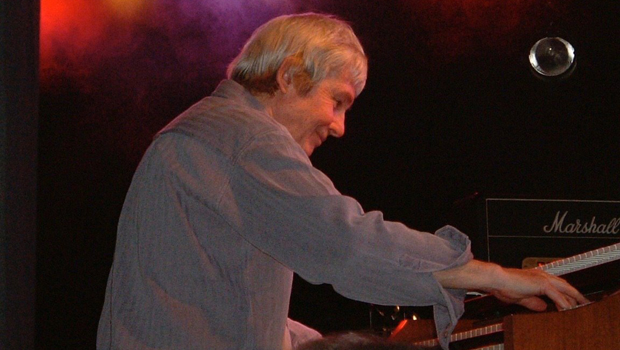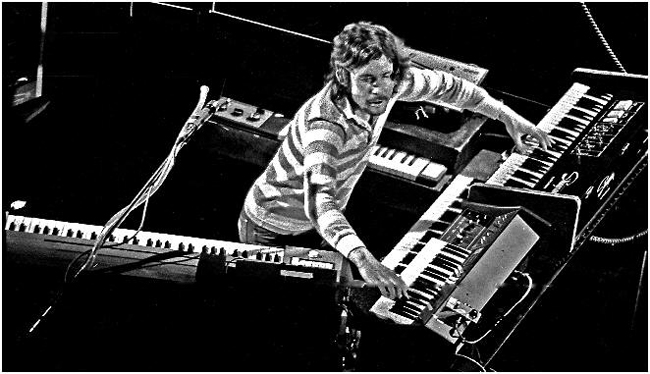Dave Greenslade was the co-founder and keyboardist behind two of prog’s best loved bands of the 1970s, Colosseum and Greenslade. He is also known for a solo career which produced albums such as Cactus Choir and The Pentateuch of the Cosmogony plus music for BBC television series such as Bird of Prey and A Very Peculiar Practice. More recently, he spent two decades touring once again with Colosseum until they finally disbanded last year. With the release of a new Greenslade live album on the Angel Air label, recorded in 1974, Dave is ready to tell TPA’s Basil Francis his musical story and how his influences have shaped his work.
I’ve been listening to the latest Greenslade release, The Birthday Album – Live Switzerland 1974, on Angel Air records. What can you tell me about this new album?
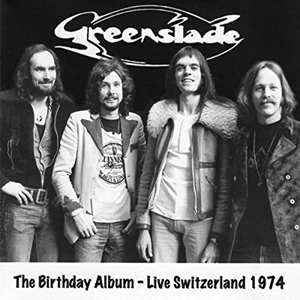 I was staggered when it surfaced. I didn’t know about this recording at all. It was recorded on 18th January 1974, which happened to be my birthday, when I turned the tender age of 31. Listening to this has brought back memories of the period near the end of the reign of the original band – Dave Lawson, Tony Reeves, Andy McCulloch, and myself – where we did a great European tour. It’s fantastic that it has resurfaced because I haven’t heard it for all those years. Somebody else found it and was about to release it under a different title, but I managed to rescue it and do some remastering work.
I was staggered when it surfaced. I didn’t know about this recording at all. It was recorded on 18th January 1974, which happened to be my birthday, when I turned the tender age of 31. Listening to this has brought back memories of the period near the end of the reign of the original band – Dave Lawson, Tony Reeves, Andy McCulloch, and myself – where we did a great European tour. It’s fantastic that it has resurfaced because I haven’t heard it for all those years. Somebody else found it and was about to release it under a different title, but I managed to rescue it and do some remastering work.
It’s certainly an interesting release for fans of the original band. You can hear a lot of improvisation around many of the band’s best loved tracks.
I think the performances from each of us on that evening are some of the best we ever did, and we were together for three years. This small concert in Switzerland has produced one of the best Greenslade gigs ever heard. Have you listened to Andy McCulloch’s drum solo on Drum Folk?
Of course, I’ve heard the whole thing!
I’ve been working with Jon Hiseman for many, many years as well as Simon Phillips, and Phil Collins, but this is the best drum solo I’ve ever heard. Tony Reeves as well, the way he performs on that Switzerland album is just staggering. He and I manage to interplay with each other in a way that I’d forgotten about. It’s been many years since that happened. We’re still very good friends of course. I met Tony Reeves when I met Jon Hiseman and we were 14-15 in a local youth club. We formed the Dave Greenslade Trio and look where it went!
I couldn’t help but notice you mentioned Phil Collins, remind me what your collaboration with him was.
I did a double album called The Pentateuch of the Cosmogony. Patrick Woodroffe, a wonderful artist who’s sadly no longer with us, did a fantastic set of paintings for it. Phil Collins played four tracks, John Lingwood did another four and I did the rest.
On the back of this new live album, it says “this is the last known live recording of the original band”. I guess the word original is key here, in the sense that the line-up would change just after recording Spyglass Guest.
That’s why this album is such a gem; it’s the original outfit and it also showcases our best work. You know how people – and bands too – sometimes talk about a “difficult second album”? It was the other way around with Greenslade! I think the first two albums were the best and I feel that the second album was even better than the first. We had no inhibitions, the record companies weren’t telling us what to do, and that helped us to be very creative. This is also true for the third and fourth album, but by then the mood had changed and so on. I maintain that the first two albums are the best, and the fact that this was with the original line-up is important to me.
I hope you don’t mind if we talk a bit about Colosseum…
Of course not, it’s been my life! We only stopped touring last year?
Is that so? I never managed to make it to any of your concerts.
Our last gig was at the Shepherd’s Bush Empire on 28th February 2015.
Ah, I was still living in Devon at that point.
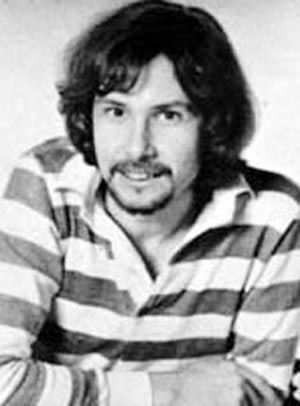 With Colosseum, we reformed in ’93, on my 50th birthday. My wife – we’re still friends, but we’re not living together – she put together a party, as she worked in the business as well. Greenslade and Colosseum were there, and none of us had been together for years, I’d been working in television dramas. There was a piano in the corner, Chris Farlowe was there and we sit together and played Stormy Monday Blues. Clem Clempson went up to Jon Hiseman and said “Listen to that; we’ve got to reform Colosseum!” And we did, and we ended up touring for twenty-two years. We toured every other year and we even brought out new albums. The band was much better the second time around, and the audiences appreciated what we were doing. It was a shame we had to stop, but we did it because Babara Thompson, our saxophonist since 2004, was suffering with Parkinson’s, and it had gotten to the point where Jon Hiseman – her husband – needed to be at home a lot to take care of her. At that point we decided to call it a day, but what a great run, eh? It’s extraordinary to think that the first time around we were only together three years, but the second Colosseum run was twenty-two years!
With Colosseum, we reformed in ’93, on my 50th birthday. My wife – we’re still friends, but we’re not living together – she put together a party, as she worked in the business as well. Greenslade and Colosseum were there, and none of us had been together for years, I’d been working in television dramas. There was a piano in the corner, Chris Farlowe was there and we sit together and played Stormy Monday Blues. Clem Clempson went up to Jon Hiseman and said “Listen to that; we’ve got to reform Colosseum!” And we did, and we ended up touring for twenty-two years. We toured every other year and we even brought out new albums. The band was much better the second time around, and the audiences appreciated what we were doing. It was a shame we had to stop, but we did it because Babara Thompson, our saxophonist since 2004, was suffering with Parkinson’s, and it had gotten to the point where Jon Hiseman – her husband – needed to be at home a lot to take care of her. At that point we decided to call it a day, but what a great run, eh? It’s extraordinary to think that the first time around we were only together three years, but the second Colosseum run was twenty-two years!
Whenever I hear the music of Colosseum, I’m always impressed by how ahead of its time it feels, fully embracing the spirit of ’70s progressive rock right back in ’69. I need to ask, what was your inspiration for making music like that in the early days?
Good question. I used to go to the Albert Hall with a good friend of mine, Geoff, who was a classical musician. We would listen to Vaughan Williams, Stravinsky, Richard Strauss, and all these other wonderful composers. I don’t suggest that I’m anywhere near these artists, but it opened my mind to another way of writing; something different to rock and roll in the 1950s which was great fun but limited. Myself and others in my generation were opening our minds to what was out there. With Jon Hiseman and Tony Reeves, I used to go to Ronnie Scott’s quite a lot and listen to Bill Evans. We’d also go to the Royal Festival Hall and hear Duke Ellington and Count Basie. We were privileged to be around when those guys were, they were wonderful. There were some great British jazz players too, Tubby Hayes and Ronnie Scott. What I’m trying to do is set the scene of my musical influences; we’ve gone from Stravinsky to Duke Ellington!
Something about that doesn’t surprise me, as progressive rock has always been a melting pot of diverse genres.
It should be. When we started, I didn’t even know what progressive rock was; I was just making music. It was the journalists that put me into the progressive rock pigeonhole. I understand it; you have to have an answer to “What is this band like?”, “It’s progressive rock.” But I didn’t know about progressive rock until someone wrote about it.
When do you think the first time you heard the term “progressive rock” was?
It was in the Melody Maker. After I’d formed Greenslade and had a bit of success with the first couple of albums, people were calling us a progressive rock band! I had no idea that’s what it was! As far as I was concerned, it was a culmination of all the stuff I’d learned and played and from the other guys’ input as well. It was just that, I didn’t call it anything. It was music!
The Valentyne Suite is regarded by many as an early masterpiece of progressive rock. How long did you guys spend writing it?
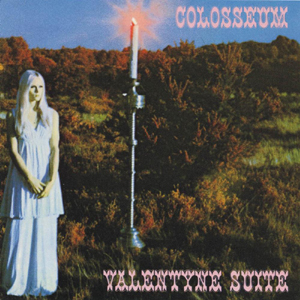 It was a combination of things. I wrote the first two sections of the suite, and I recorded them in my flat on a reel-to-reel, and then took them to rehearsals. Afterwards, Jon and the others would rearrange it for a live performance. He would say things like “We need a fanfare in the middle of this, Dave.” So I’d put in a fanfare or something here and there, but I was the main writer of the first two themes including the slow section in the middle which I’m really proud of actually. There were two alternative third sections. Dick Heckstall-Smith wrote a lovely bit called The Grass is Greener. Absolutely beautiful. He was a lovely guy, I really miss him. I’ve actually got a wonderful recording of him on a separate release, Time to Make Hay, a bunch of original recordings of my demos.
It was a combination of things. I wrote the first two sections of the suite, and I recorded them in my flat on a reel-to-reel, and then took them to rehearsals. Afterwards, Jon and the others would rearrange it for a live performance. He would say things like “We need a fanfare in the middle of this, Dave.” So I’d put in a fanfare or something here and there, but I was the main writer of the first two themes including the slow section in the middle which I’m really proud of actually. There were two alternative third sections. Dick Heckstall-Smith wrote a lovely bit called The Grass is Greener. Absolutely beautiful. He was a lovely guy, I really miss him. I’ve actually got a wonderful recording of him on a separate release, Time to Make Hay, a bunch of original recordings of my demos.
Beware the Ides of March, which was released on Colosseum’s debut UK release, was the original third section to Valentyne Suite. There’s been lots of comments that it sounds like A Whiter Shade of Pale.
(Laughs) Absolutely!
Was that intentional or did that just happen?
It’s just a lovely chord sequence that Bach wrote hundreds of years before, and he didn’t get any royalties at all!
Onto Greenslade the band. I’ve always been curious, how come your surname was chosen as the band title?
That wasn’t intended, I promise you. We had a deal with a management company, but we hadn’t got a name. They used to say “Oh, Greenslade’s coming in”, i.e. me, but with the rest of the band to talk about how we were going to go forwards. I used to assure the guys I was working on a name. We came up with names such as Phoenix, all that crap, all the sort of proggy names. I didn’t like any of it, because I didn’t want to be associated with something prog. I didn’t know what it meant and I just was making music. After a while the name stuck: “Oh Greenslade’s coming in the office”, but now meaning the band. None of the band could think of a better name, so we just became Greenslade.
You’ve mentioned already that you knew Tony Reeves from a young age, but how did you come to meet Dave Lawson and Andy McCulloch, two great prog musicians in themselves?
I hadn’t heard of them before. When I formed the band I needed a drummer and another keyboard player and a vocalist, since I don’t sing – although I did on Cactus Choir, would you believe. We knew a lot of people back then, and we were just put together and found we had a great chemistry. That is the answer with bands, especially supergroups. The ones that don’t work don’t have chemistry. Despite coming from great and diverse bands such as Colosseum and King Crimson, Greenslade wouldn’t have worked without the chemistry.
The sound of Greenslade is vastly different to the sound of Colosseum, no doubt in part due to the new band members involved. Had you also perhaps picked up some new musical inspirations by this point?
Well, I believe the reason we sounded so different was because we didn’t have a guitar player. This isn’t because I had anything against guitar players; quite the contrary, I’d been playing with Clem Clempson, one of the best! I didn’t want to try and replace that with my new band so I thought I’d look for another keyboardist instead. A lot of people in the business thought it wouldn’t work without a guitarist, but I said “You wait.” We wrote material that was right for that line-up. Together, I think we sound much bigger than four people on those albums.
I’ve always thought that the music of Greenslade is very atmospheric as in it creates atmospheres that fills the room.
That’s right, but most of all it was honest. We didn’t care about whether it was progressive or whether it was jazz rock. This wasn’t true in Colosseum either. When the journals started saying we were a jazz rock band then we said “Oh, that’s what we are then? Fine!” But other people tell us that.
I’m actually a little bit surprised by your answer. With the sound of Greenslade including many notoriously progressive features such as Mellotrons and odd time signatures, I would have said that you would have picked up some more progressive influences by this point, but it sounds as if you didn’t.
Absolutely not. I didn’t like all that stuff. I didn’t really like Yes and bands like that; I thought it was all a bit pretentious, quite frankly. They were great musicians of course, but I thought it was all a bit staid.
It’s funny that you didn’t like Yes, and yet Roger Dean happened to paint covers for three of your albums.
Andy McCulloch was reading various books and had come across Roger Dean. We needed some sort of vivid cover. It just happened that he crossed paths with us at the same time. I actually designed the first album cover in a pub on the top of Stanmore Hill. We were rehearsing down there and Roger came along and I had an idea – a guy with a lectern and several arms, like a multi-limbed keyboard player, to signify that we had two keyboard players. I sketched it on the back of a menu and he took it away and created all that, and I thought it was brilliant.
What’s the Greenslade track you’re most proud of?
I’m not sure I’d know how to answer that question off the top of my head, but on this latest live release, I’d have to say the second track, Sunkissed You’re Not – which was actually a track that Dave Lawson wrote on his own – the performance from the band is staggering. It’s much better than on the album. That’s the one that does it for me, but I’m also fond of Sundance.
Oh yes, that track is 17 minutes on this album, isn’t it?
Again, we extended it from the album and there are some wonderful performances.
Lastly, what do you think is next for you?
I’m still writing, I never stop. I don’t know quite what’s next, it may be another solo album, who knows.
Thank you so much for taking the time to talk to The Progressive Aspect.
[You can read Basil’s review of the Greenslade Birthday Party live album HERE.]
LINKS
Greenslade – Website

